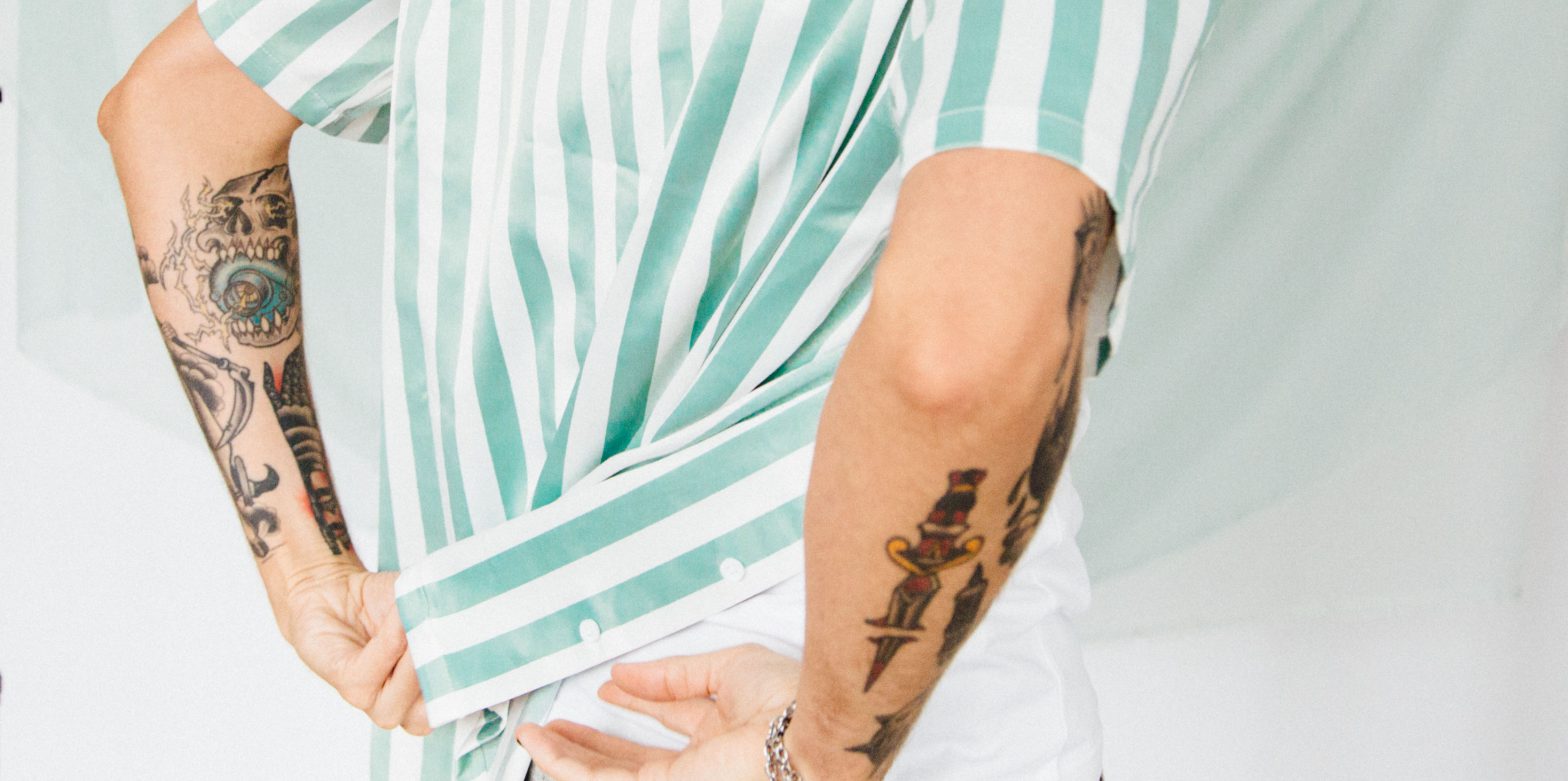A lot of thought can, and should, go into deciding to get inked. Deliberating over whether to get a tattoo in the first place, which studio or artist you’re where to get it on your body, what design and size of ink you’re committing to, and enduring the discomfort or pain of the actual inking experience—that all involves ample consideration, but it’s only part of the process to having a great tattoo. The nuances of after-care are equally as important.
Follow your artist’s advice
While certain products—and the frequency or combination in which they’re applied—may be widely recommended and used, it’s important to know there certainly isn’t a one-size-fits-all approach to post-tattoo care, stresses Tyson Weed, a tattoo artist at Sentient Tattoo Collective in Tempe, Arizona. “Follow the aftercare instructions that your tattoo artist gives. Don’t Google it. Don’t ask your friend’s brother’s cousin who got a tattoo 20 years ago what to do,” Weed says. “Just follow the instructions your artist gives you. My aftercare routine is not necessarily the only one but what I’ve found to be the best way to heal a tattoo properly.”
When (and how) to clean your new tattoo
As for Weed’s own guidelines for after tattoo care and healing, “I tell my clients to wash their tattoo every four to six hours for the first 48 hours, using hot water and a liquid unscented antibacterial hand soap,” he shares. “I advise they get a good lather with the hand soap, washing the tattoo thoroughly with their hand, rinsing with hot water, and dabbing dry with a paper towel.” Next, Weed recommends applying a fine layer of Aquaphor and covering the area with a plastic wrap barrier such as Saran Wrap, as “this process allows the tattoo to heal from the inside out.” Aquaphor (and other petroleum jelly-based ointments) are effective for after-tat care because they “keep the skin moist and speed up the healing process” explains Neil Tanna, MD, Associate Program Director of Plastic Surgery and Professor of Surgery at Northwell Health. Tanna also recommends applying Saniderm, “which can help reduce the risk of infection.” Many tattoo artists advise against using Neosporin and Bacitracin on newly inked tattoos because of possible allergic reactions, but why? “Allergic contact dermatitis is a concern with bacteriocidal ointments such as bacitracin or neomycin—ointments containing petroleum jelly such as Aquaphor can keep the skin moist and provide a protective barrier against airborne bacteria and contaminants,” Tanna says.
Wrap it up
As for the purpose of keeping fresh ink under (plastic) wrap, literally: “for the first 48 hours, your body is weeping white blood cells and plasma…during that time, if the white blood cells and plasma mix with oxygen, they can coagulate creating a scab,” Weed explains. “Scabs can cause what we call ‘holidays’ or areas in the tattoo that have gone on vacation and are never coming back—blank spots.” After a period of washing and wrapping, Weed recommends his clients do a “dry heal for seven to 10 days, which means no more washing or wrapping, and keeping it out of water while showering. Dry heal means no hot tubs, pools, saunas, gyms, or sweating, which allows the skin we damaged while applying the tattoo to exfoliate quickly on its own.” Know that this part of the healing process can get uncomfortable. “The tattoo will get dry, itchy, flaky and peel, I recommend not picking or scratching at the tattoo, just letting it slough off naturally.” After the dry heal period is complete, keep moisturizing the area, but be sure to use an unscented lotion—CeraVe, Vanicream, and Eucerin all have great options. Why is it important to take a break from your favorite fragranced moisturizers? “Using scented lotion can sometimes lead to an infection, and it takes about three weeks for a tattoo to fully heal,” Weed explains.
What to do—and what to skip
Certain activities should definitely be avoided in the first few days—and weeks—after getting a tattoo. According to Tanna, “intensive exercise, such as jogging or heavy weightlifting” need to be skipped in the first few days after getting inked, though “walking and other mild forms of aerobic exercise are okay.” When showering in the initial days of having fresh ink, be sure to use unscented soap, applied only by hand: “do not use a washcloth, sponge, or loofah, all of which can harbor plenty of bacteria,” Tanna cautions.
What to watch out for
While following your tattoo artist’s specific aftercare instructions (along with checking out the above pointers, many of which should overlap with your artist’s advice) will hopefully deter any infection or further health complications post-tattooing, there are a couple of signs of infection or allergic reaction to keep an eye out for. “Watch out for signs of localized infection, such as red and swollen skin that is hot to the touch,” says Tanna. “Some oozing from the tattoo is normal after the first couple of days, especially if bacitracin is applied, but persistent pus or discharge from the skin should be brought up with a doctor. Additionally, a combination of high fever, chills, and tachycardia (a.k.a. fast heart rate) can indicate sepsis, which is a medical emergency.”
How to prevent fading
To prevent fading as much as possible in the months and years after getting inked, SPF is your best friend. “After the tattoo is fully healed, wear sunscreen!” Weed says. “Sun exposure is the worst thing for a tattoo and will fade a tattoo faster than anything else.” The biggest mistake people make after getting a tattoo is neglecting to follow the aftercare procedure, per Weed, who cautions against another post-ink flub: “The second biggest mistake is not tipping.” Touche.

